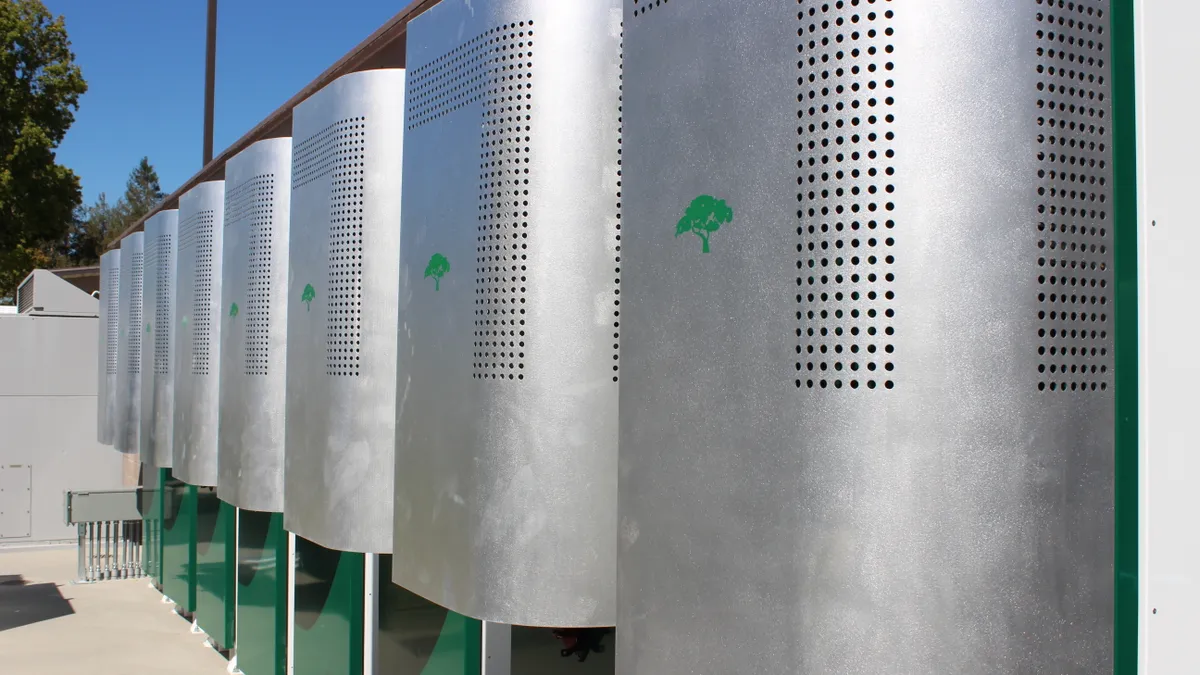Dive Brief:
- The Massachusetts Department of Public Utilities (DPU) issued two orders on Friday, to specify net metering for solar-plus-storage facilities and the capacity ownership rights of such projects.
- "Both of those clarifications were absolutely necessary," Department of Energy Resources (DOER) Commissioner Judith Judson said on a Feb. 4 call with reporters. DOER worked with the state Attorney General's office on the DPU docket to help utilities and developers compromise on how to deploy more energy storage without placing an undue burden on taxpayers.
- For developers, capacity rights ownership to dispatch a generator or storage resource is fundamental to adding more storage and distributed renewables onto the grid. Despite the launch of the main state program for commercial energy storage, Solar Massachusetts Renewable Target (SMART), last fall, projects were viewed as less viable without developer access to a new revenue stream in the ISO-New England capacity market, DOER staff said.
Dive Insight:
The Massachusetts legislature last year extended the state storage target, previously set a 200 MWh by 2020, to 1,000 MWh by 2025. The state has 232 projects operating and under development, for 190 MW / 470 MWh of capacity, according to Judson.
By providing clarity on the state's storage rules, regulators expect to unlock the potential of a commercial energy storage market, Judson said.
"I think we'll very quickly start to see projects operating now that the rule of how solar-plus-storage works together ... has been clarified and established by our Department of Public Utilities," Judson said.
Project owners are expected to move as early as this spring to take advantage of the clearance to move forward and participate in capacity markets, according to DOER staff. The SMART program, which allows 12 months for construction after a project has qualified, had already established a revenue stream aside from the capacity market.
The first filing, concerning net metering, identified four possible solar-plus-storage configurations on the grid:
- On-site net metering: a storage resource solely charges from a net metering facility such as a solar component and doesn't export power to the grid;
- Net metering and exports: a storage resource charges exclusively from the net metering facility but is allowed to export power back to the grid;
- Non-export: a storage system charges from either a net metering facility or the grid, but cannot export back to the grid — ideally for the use of backup power during severe weather; and
- Net generation output meter: storage can charge from and export to the grid, in addition to the solar, as a non-restricted charging source.
Of those, only the fourth one didn't receive DPU approval, although regulators said "they'd be open to consideration in the future as we gain practice with these types of facilities," Judson said.
The second filing addressed the tension of preserving utility ownership of capacity rights under the SMART program.
For solar net metered projects, utilities were given capacity rights to offset costs of the net metering program and protect ratepayers that don't install their own distributed solar. However, utilities weren't taking advantage of that capacity and bidding it into the ISO-NE market, according to DOER staff. Developers began to buy out utilities and aggregate the capacity from solar installations, but the co-location of solar and storage muddled the options, prompting clarification from regulators.
"There's a lot of nuances to how the ISO rules interact with how the utility rules work that interact with how specific projects are metered and work in conjunction," Judson said.
"[The second filing] also clarified that the storage capacity is always owned by the host customer, not the utility, and then worked out the terms of that buy out," she said.














